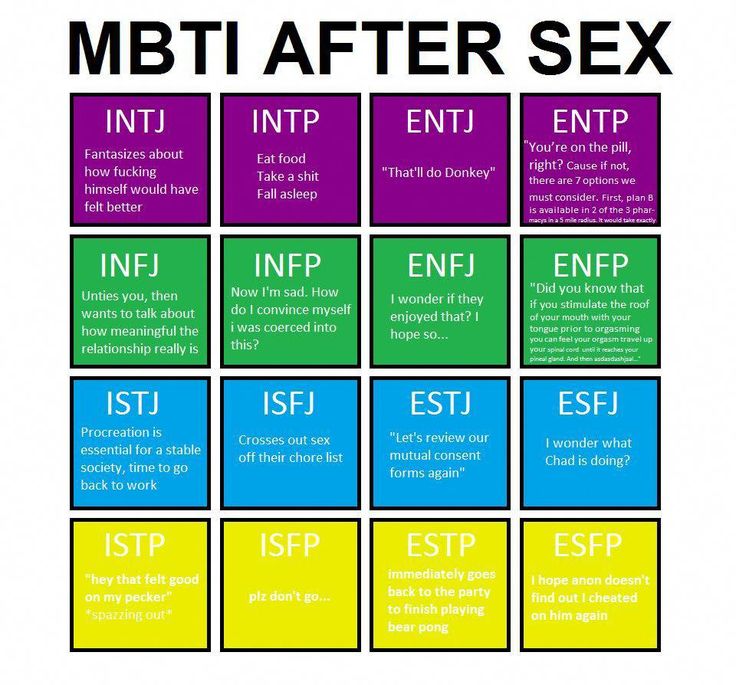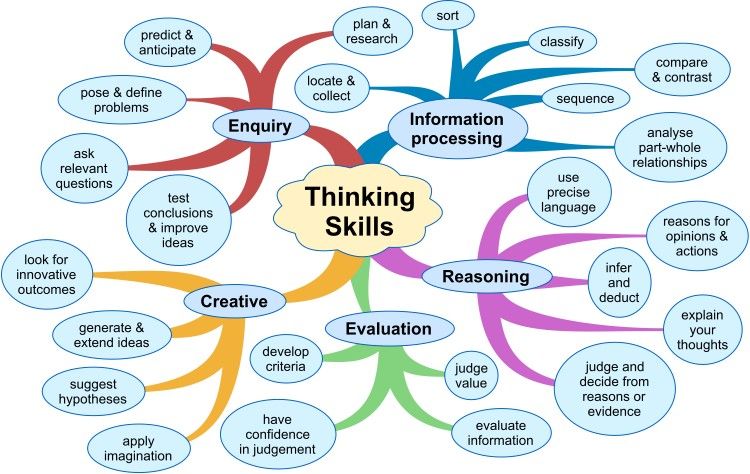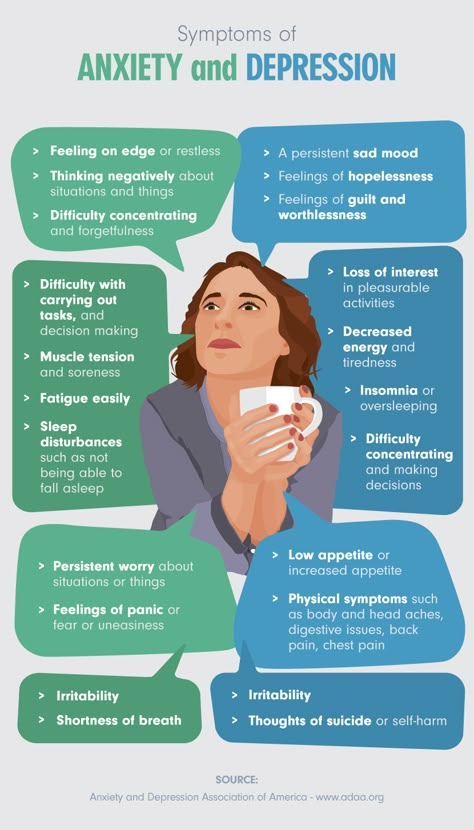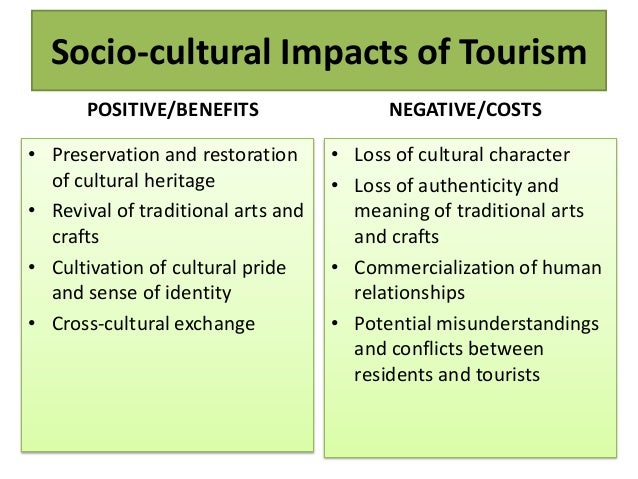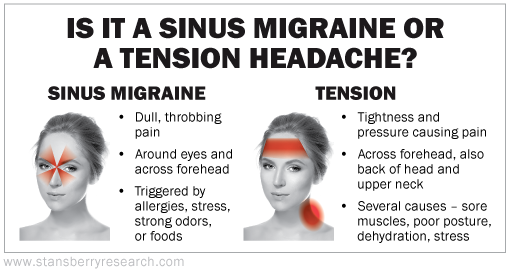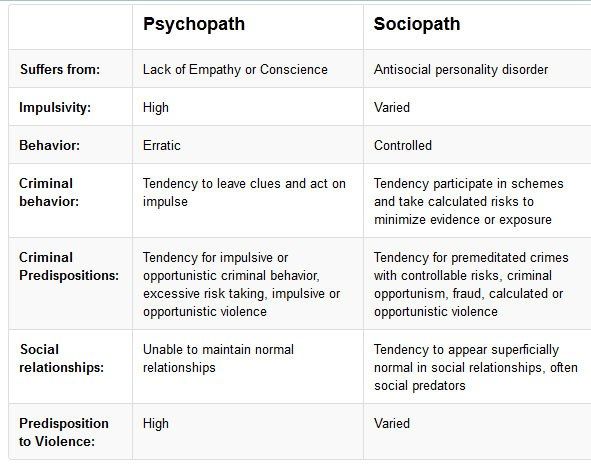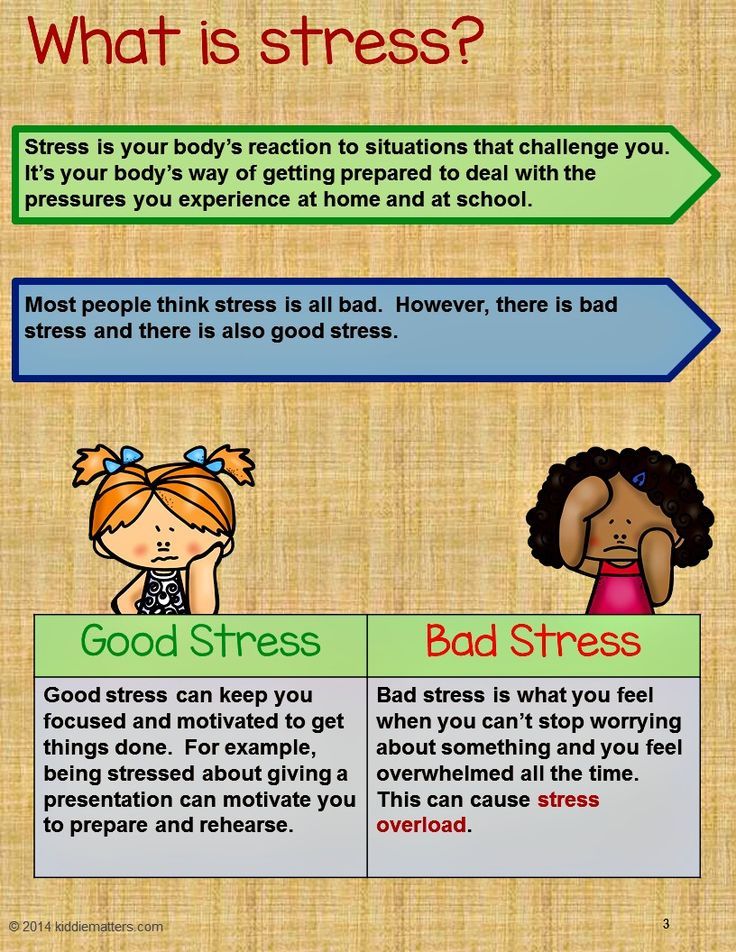Your well being
Well-Being Concepts | HRQOL | CDC
Well-being is a positive outcome that is meaningful for people and for many sectors of society, because it tells us that people perceive that their lives are going well. Good living conditions (e.g., housing, employment) are fundamental to well-being. Tracking these conditions is important for public policy. However, many indicators that measure living conditions fail to measure what people think and feel about their lives, such as the quality of their relationships, their positive emotions and resilience, the realization of their potential, or their overall satisfaction with life—i.e., their “well-being.”1, 2 Well-being generally includes global judgments of life satisfaction and feelings ranging from depression to joy.3, 4
- Why is well-being useful for public health?
- How does well-being relate to health promotion?
- How is well-being defined?
- How is well-being measured?
- What are some findings from these studies?
- What are some correlates and determinants of individual-level well-being?
- What are some correlates of well-being at the national level?
- What is the difference between health-related quality of life, well-being, flourishing, positive mental health, optimal health, happiness, subjective well-being, psychological well-being, life satisfaction, hedonic well-being, and other terms that exist in the literature?
- What is CDC doing to examine and promote well-being?
Why is well-being useful for public health?
- Well-being integrates mental health (mind) and physical health (body) resulting in more holistic approaches to disease prevention and health promotion.
6
- Well-being is a valid population outcome measure beyond morbidity, mortality, and economic status that tells us how people perceive their life is going from their own perspective.1, 2, 4, 5
- Well-being is an outcome that is meaningful to the public.
- Advances in psychology, neuroscience, and measurement theory suggest that well-being can be measured with some degree of accuracy.2, 7
- Results from cross-sectional, longitudinal and experimental studies find that well-being is associated with1, 8:
- Self-perceived health.
- Longevity.
- Healthy behaviors.
- Mental and physical illness.
- Social connectedness.
- Productivity.
- Factors in the physical and social environment.
- Well-being can provide a common metric that can help policy makers shape and compare the effects of different policies (e.g., loss of greenspace might impact well-being more so than commercial development of an area).
 4, 5
4, 5 - Measuring, tracking and promoting well-being can be useful for multiple stakeholders involved in disease prevention and health promotion.
Well-being is associated with numerous health-, job-, family-, and economically-related benefits.8 For example, higher levels of well-being are associated with decreased risk of disease, illness, and injury; better immune functioning; speedier recovery; and increased longevity. 9-13 Individuals with high levels of well-being are more productive at work and are more likely to contribute to their communities.4, 14
Previous research lends support to the view that the negative affect component of well-being is strongly associated with neuroticism and that positive affect component has a similar association with extraversion.15, 16 This research also supports the view that positive emotions—central components of well-being—are not merely the opposite of negative emotions, but are independent dimensions of mental health that can, and should be fostered. 17, 25 Although a substantial proportion of the variance in well-being can be attributed to heritable factors,26, 27 environmental factors play an equally if not more important role.4, 5, 28
17, 25 Although a substantial proportion of the variance in well-being can be attributed to heritable factors,26, 27 environmental factors play an equally if not more important role.4, 5, 28
Top of Page
How does well-being relate to health promotion?
Health is more than the absence of disease; it is a resource that allows people to realize their aspirations, satisfy their needs and to cope with the environment in order to live a long, productive, and fruitful life.25, 29-31 In this sense, health enables social, economic and personal development fundamental to well-being.25, 30, 31 Health promotion is the process of enabling people to increase control over, and to improve their health.25, 30, 32 Environmental and social resources for health can include: peace, economic security, a stable ecosystem, and safe housing.30 Individual resources for health can include: physical activity, healthful diet, social ties, resiliency, positive emotions, and autonomy. Health promotion activities aimed at strengthening such individual, environmental and social resources may ultimately improve well-being.24, 25
Health promotion activities aimed at strengthening such individual, environmental and social resources may ultimately improve well-being.24, 25
Top of Page
How is well-being defined?
There is no consensus around a single definition of well-being, but there is general agreement that at minimum, well-being includes the presence of positive emotions and moods (e.g., contentment, happiness), the absence of negative emotions (e.g., depression, anxiety), satisfaction with life, fulfillment and positive functioning. 4, 33-35 In simple terms, well-being can be described as judging life positively and feeling good.36, 37 For public health purposes, physical well-being (e.g., feeling very healthy and full of energy) is also viewed as critical to overall well-being. Researchers from different disciplines have examined different aspects of well-being that include the following4, 34, 38, 39, 41-46:
- Physical well-being.
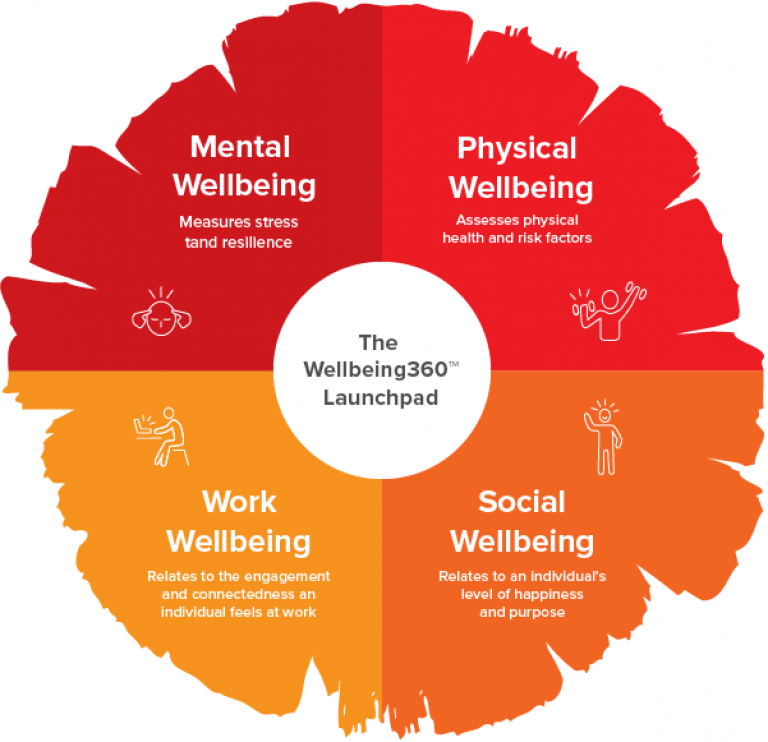
- Economic well-being.
- Social well-being.
- Development and activity.
- Emotional well-being.
- Psychological well-being.
- Life satisfaction.
- Domain specific satisfaction.
- Engaging activities and work.
Top of Page
How is well-being measured?
Because well-being is subjective, it is typically measured with self-reports.40 The use of self-reported measures is fundamentally different from using objective measures (e.g., household income, unemployment levels, neighborhood crime) often used to assess well-being. The use of both objective and subjective measures, when available, are desirable for public policy purposes.5
There are many well-being instruments available that measure self-reported well-being in different ways, depending on whether one measures well-being as a clinical outcome, a population health outcome, for cost-effectiveness studies, or for other purposes. For example, well-being measures can be psychometrically-based or utility-based. Psychometrically-based measures are based on the relationship between, and strength among, multiple items that are intended to measure one or more domains of well-being. Utility-based measures are based on an individual or group’s preference for a particular state, and are typically anchored between 0 (death) to 1 (optimum health). Some studies support use of single items (e.g., global life satisfaction) to measure well-being parsimoniously. Peer reports, observational methods, physiological methods, experience sampling methods, ecological momentary assessment, and other methods are used by psychologists to measure different aspects of well-being.42
For example, well-being measures can be psychometrically-based or utility-based. Psychometrically-based measures are based on the relationship between, and strength among, multiple items that are intended to measure one or more domains of well-being. Utility-based measures are based on an individual or group’s preference for a particular state, and are typically anchored between 0 (death) to 1 (optimum health). Some studies support use of single items (e.g., global life satisfaction) to measure well-being parsimoniously. Peer reports, observational methods, physiological methods, experience sampling methods, ecological momentary assessment, and other methods are used by psychologists to measure different aspects of well-being.42
Over the years, for public health surveillance purposes, CDC has measured well-being with different instruments including some that are psychometrically-based, utility-based, or with single items:
| Survey | Questionnaires/questions |
|---|---|
| National Health and Nutrition Examination Survey (NHANES) |
|
| National Health Interview Survey (NHIS) |
|
| Behavioral Risk Factor Surveillance System (BRFSS) |
|
| Porter Novelli Healthstyles Survey |
|
Top of Page
What are some findings from these studies?
- Data from the NHANES I (1971–1975), found that employed women had a higher sense of well-being and used fewer professional services to cope with personal and mental health problems than their nonemployed counterparts.
 53
53 - Data from the 2001 NHIS and Quality of Well-Being scale, a preference based scale which scores well-being between 0-1, found that males or females between the ages of 20–39 had significantly better well-being (scores ≥ 0.82) compared with males or females 40 years of age or older (scores >0.79).54
- Data from the 2005 Behavioral Risk Factor Surveillance System found that 5.6% of US adults (about 12 million) reported that they were dissatisfied/very dissatisfied with their lives.48
- Data from the 2005 BRFSS found that about 8.6% of adults reported that they rarely/never received social and emotional support; ranging in value from 4.2% in Minnesota to 12.4% in the US Virgin Islands.47
- Based on 2008 Porter Novelli HealthStyles data.55
- 11% of adults felt cheerful all of the time in the past 30 days.
- 15% of adults felt calm and peaceful all of the time in the past 30 days.
- 13% of adults felt full of life all of the time in the past 30 days.

- 9.8% of adults strongly agree that their life is close to their ideal.
- 19% of adults strongly agree that they are satisfied with their life.
- 21% of adults strongly agree that their life has a clear sense of purpose.
- 30% of adults strongly agree that on most days they feel a sense of accomplishment from what they do.
Top of Page
What are some correlates and determinants of individual-level well-being?
There is no sole determinant of individual well-being, but in general, well-being is dependent upon good health, positive social relationships, and availability and access to basic resources (e.g., shelter, income).
Numerous studies have examined the associations between determinants of individual and national levels of well-being. Many of these studies have used different measures of well-being (e.g., life satisfaction, positive affect, psychological well-being), and different methodologies resulting in occasional inconsistent findings related to well-being and its predictors. 37, 56 In general, life satisfaction is dependent more closely on the availability of basic needs being met (food, shelter, income) as well as access to modern conveniences (e.g., electricity). Pleasant emotions are more closely associated with having supportive relationships.5
37, 56 In general, life satisfaction is dependent more closely on the availability of basic needs being met (food, shelter, income) as well as access to modern conveniences (e.g., electricity). Pleasant emotions are more closely associated with having supportive relationships.5
Some general findings on associations between well-being and its associations with other factors are as follows:
Genes and Personality
At the individual level, genetic factors, personality, and demographic factors are related to well-being. For example, positive emotions are heritable to some degree (heritability estimates range from 0.36 to 0.81), suggesting that there may be a genetically determined set-point for emotions such as happiness and sadness.26,27,57,58,59 However, the expression of genetic effects are often influenced by factors in the environment implying that circumstances and social conditions do matter and are actionable from a public policy perspective. Longitudinal studies have found that well-being is sensitive to life events (e.g., unemployment, marriage).60, 61 Additionally, genetic factors alone cannot explain differences in well-being between nations or trends within nations.
Longitudinal studies have found that well-being is sensitive to life events (e.g., unemployment, marriage).60, 61 Additionally, genetic factors alone cannot explain differences in well-being between nations or trends within nations.
Some personality factors that are strongly associated with well-being include optimism, extroversion, and self-esteem.20, 62 Genetic factors and personality factors are closely related and can interact in influencing individual well-being.
While genetic factors and personality factors are important determinants of well-being, they are beyond the realm of public policy goals.
Age and Gender
Depending on which types of measures are used (e.g., life satisfaction vs. positive affect), age and gender also have been shown to be related to well-being. In general, men and women have similar levels of well-being, but this pattern changes with age,63 and has changed over time.64 There is a U-shaped distribution of well-being by age—younger and older adults tend to have more well-being compared to middle-aged adults. 65
65
Income and Work
The relationship between income and well-being is complex.4, 39, 65 Depending on which types of measures are used and which comparisons are made, income correlates only modestly with well-being. In general, associations between income and well-being (usually measured in terms of life satisfaction) are stronger for those at lower economic levels, but studies also have found effects for those at higher income levels.66 Paid employment is critical to the well-being of individuals by conferring direct access to resources, as well as fostering satisfaction, meaning and purpose for some.67 Unemployment negatively affects well-being, both in the short- and long-term.61, 65, 67
Relationships
Having supportive relationships is one of the strongest predictors of well-being, having a notably positive effect.68, 69
Top of Page
What are some correlates of well-being at the national level?
Countries differ substantially in their levels of well-being. 4, 70 Societies with higher well-being are those that are more economically developed, have effective governments with low levels of corruption, have high levels of trust, and can meet citizens’ basic needs for food and health.4, 5 Cultural factors (e.g., individualsm vs. collectivism, social norms) also play a role in national estimates of well-being.70
4, 70 Societies with higher well-being are those that are more economically developed, have effective governments with low levels of corruption, have high levels of trust, and can meet citizens’ basic needs for food and health.4, 5 Cultural factors (e.g., individualsm vs. collectivism, social norms) also play a role in national estimates of well-being.70
What is the difference between health-related quality of life, well-being, flourishing, positive mental health, optimal health, happiness, subjective well-being, psychological well-being, life satisfaction, hedonic well-being, and other terms that exist in the literature?
71Some researchers suggest that many of the terms are synonymous, whereas others note that there are major differences based on which dimensions are independent and contribute most to well-being.37, 71 This is an evolving science, with contributions from multiple disciplines. Traditionally, health-related quality of life has been linked to patient outcomes, and has generally focused on deficits in functioning (e. g., pain, negative affect). In contrast, well-being focuses on assets in functioning, including positive emotions and psychological resources (e.g., positive affect, autonomy, mastery) as key components. Some researchers have drawn from both perspectives to measure physical and mental well-being for clinical and economic studies. Subjective well-being typically refers to self-reports contrasted with objective indicators of well-being. The term, “positive mental health” calls attention to the psychological components that comprise well-being from the perspective of individuals interested primarily in the mental health domain. From this perspective, positive mental health is a resource, broadly inclusive of psychological assets and skills essential for well-being.24, 25 But, the latter generally excludes the physical component of well-being. “Hedonic” well-being focuses on the “feeling” component of well-being (e.g., happiness) in contrast to “eudaimonic” well-being which focuses on the “thinking” component of well-being (e.
g., pain, negative affect). In contrast, well-being focuses on assets in functioning, including positive emotions and psychological resources (e.g., positive affect, autonomy, mastery) as key components. Some researchers have drawn from both perspectives to measure physical and mental well-being for clinical and economic studies. Subjective well-being typically refers to self-reports contrasted with objective indicators of well-being. The term, “positive mental health” calls attention to the psychological components that comprise well-being from the perspective of individuals interested primarily in the mental health domain. From this perspective, positive mental health is a resource, broadly inclusive of psychological assets and skills essential for well-being.24, 25 But, the latter generally excludes the physical component of well-being. “Hedonic” well-being focuses on the “feeling” component of well-being (e.g., happiness) in contrast to “eudaimonic” well-being which focuses on the “thinking” component of well-being (e. g., fulfillment).35 People with high levels of positive emotions, and those who are functioning well psychologically and socially are described by some as having complete mental health, or as “flourishing.” 46
g., fulfillment).35 People with high levels of positive emotions, and those who are functioning well psychologically and socially are described by some as having complete mental health, or as “flourishing.” 46
In summary, positive mental health, well-being and flourishing refer to the presence of high levels of positive functioning—primarily in the mental health domain (inclusive of social health). However, in its broadest sense, well-being encompasses physical, mental, and social domains.
The reasons why well-being and related constructs should be measured and evaluating how these domains can be changed should help inform which domains (e.g., life satisfaction, positive affect, autonomy, meaning, vitality, pain) should be measured, and which instruments and methods to use.71
Top of Page
What is CDC doing to examine and promote well-being?
CDC’s Health-Related Quality of Life Program has led an effort since 2007 to examine how well-being can be integrated into health promotion and how it can be measured in public health surveillance systems. 55 A number of studies have examined the feasibility of existing scales for surveillance, including application of item-response theory to identify brief, psychometrically sound short-form(s) that can be used in public health surveillance systems.72,73 CDC and three states (OR, WA, NH) collected data using the Satisfaction with Life Scale and other well-being measures on the 2010 Behavioral Risk Factor Surveillance System.74 CDC also led the development of overarching goals related to quality of life and well-being for the Healthy People 2020External initiative.
55 A number of studies have examined the feasibility of existing scales for surveillance, including application of item-response theory to identify brief, psychometrically sound short-form(s) that can be used in public health surveillance systems.72,73 CDC and three states (OR, WA, NH) collected data using the Satisfaction with Life Scale and other well-being measures on the 2010 Behavioral Risk Factor Surveillance System.74 CDC also led the development of overarching goals related to quality of life and well-being for the Healthy People 2020External initiative.
Top of Page
Resources
- CDC Healthy Living
- CDC Physical Activity Basics
Top of Page
+References- Diener E, Seligman ME. Beyond money. Toward an economy of well-being. Psychological Science in the Public Interest 2004;5(1):1–31.
- Diener E. Assessing well-being: the collected works of Ed Diener.
 New York: Springer; 2009.
New York: Springer; 2009. - Diener E, Scollon CN, Lucas RE. The evolving concept of subjective well-being: the multifaceted nature of happiness. In: E Diener (ed.) Assessing well-being: the collected works of Ed Diener. New York: Springer; 2009:67–100.
- Frey BS, Stutzer A. Happiness and economics. Princeton, N.J.: Princeton University Press; 2002.
- Diener E, Lucas R, Schimmack U, and Helliwell J. Well-Being for public policy. New York: Oxford University Press; 2009.
- Dunn HL. High level wellness. R.W. Beatty, Ltd: Arlington; 1973.
- Kahneman D. Objective happiness. In: D Kahneman, E Diener, and N Schwartz (eds.) Well-being: the foundations of hedonic psychology. New York: Russell Sage Foundation; 1999:3–25.
- Lyubomirsky S, King L, Diener E. The benefits of frequent positive affect: does happiness lead to success? Psychol Bull 2005;131(6):803–855.
- Pressman SD, Cohen S. Does positive affect influence health? Psychol Bull 2005;131:925–971.

- Ostir GV, Markides KS, Black SA. et al. Emotional well-being predicts subsequent functional independence and survival. J Am Geriatr Soc 2000;48:473–478.
- Ostir GV, Markides KS, Peek MK, et al. The association between emotional well-being and incidence of stroke in older adults. Psychosom Med 2001;63:210–215.
- Diener E, Biswas-Diener R. Happiness: Unlocking the mysteries of psychological wealth. Malden, MA: Blackwell Publishing; 2008.
- Frederickson BL, Levenson RW. Positive emotions speed recovery from the cardiovascular sequelae of negative emotions. Cognition and Emotion 1998;12:191–220.
- Tov W, Diener E. The well-being of nations: Linking together trust, cooperation, and democracy. In: BA Sullivan, M Snyder, JL Sullivan (Eds.) Cooperation: The psychology of effective human interaction. Malden, M.A.: Blackwell Publishing; 2008:323–342.
- Diener E, Lucas RE. Personality and subjective well-being. In: D.
 Kahneman, E. Diener, and N. Schwartz (eds.). Well-being: the foundations of hedonic psychology. New York: Russell Sage Foundation; 2003:213–229.
Kahneman, E. Diener, and N. Schwartz (eds.). Well-being: the foundations of hedonic psychology. New York: Russell Sage Foundation; 2003:213–229. - Steel P, Schmidt J, Schultz, J. Refining the relationship between personality and subjective well-being. Psychological Bulletin2008;134(1):138–161.
- Bradburn NM. The structure of psychologal well-being. Chicago: Aldine; 1969.
- Diener E, Emmons RA. The independence of positive and negative affect. Journal of Personality and Social Psychology 1984;47:1105–1117.
- Ryff CD, Love GD, Urry LH, et al. Psychological well-being and ill-being: do they have distinct or mirrored biological correlates? Psychother Psychosom 2006;75:85–95.
- Costa PT, McCrae RR. Influence of extraversion and neuroticism on subjective well-being: happy and unhappy people. Journal of Personality and Social Psychology 1980;38:668–678.
- Schimmack U. The structure of subjective well-being.
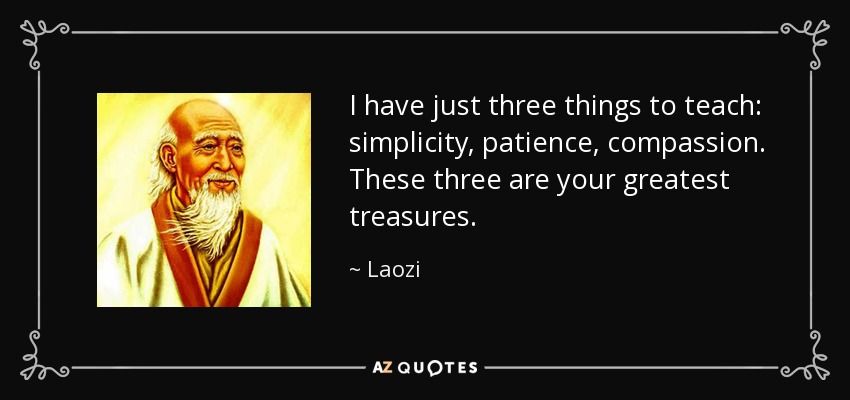 In: M Eid, RJ Larsen (eds). The science of subjective well-being. New York: Guilford Press; 2008.
In: M Eid, RJ Larsen (eds). The science of subjective well-being. New York: Guilford Press; 2008. - Seligman ME. Authentic happiness. New York, NY: Free Press; 2002.
- Frederickson, B.L. Positivity. New York: Crown Publishing; 2009.
- Tellegen A, Lykken DT, Bouchard TJ, Wilcox KJ, Segal NL, Stephen R. Personality similarity in twins reared apart and together. J Pers Soc Psychol 1988;54(6):1031–1039.
- Herrman HS, Saxena S, Moodie R. Promoting Mental Health: Concepts, Emerging Evidence, Practice. A WHO Report in collaboration with the Victoria health Promotion Foundation and the University of Melbourne. Geneva: World Health Organization; 2005. http://www.who.int/mental_health/evidence/MH_Promotion_Book.pdf Cdc-pdf[PDF – 1.98MB]External. Accessed Oct. 1, 2010
- Barry MM, Jenkins R. Implementing Mental Health Promotion. Oxford: Churchill Livingstone, Elsevier. 2007
- Lykken D, Tellegen A. Happiness is a stochastic phenomenon.
 Psychol Sci 1996;7:186–189.
Psychol Sci 1996;7:186–189. - Diener E, Lucas RE, Scollon CN. Beyond the hedonic treadmill: revising the adaptation theory of well-being. American Psychologist 2006;61(4):305–314.
- World Health Organization. 1949. WHO Constitution. Retrieved February 12, 2008 from http://www.who.int/about/en/External.
- Ottawa Charter for Health Promotion, First International Conference on Health Promotion, Ottawa, 21 November 1986 – WHO/HPR/HEP/95.1. Available at: http://www.who.int/healthpromotion/conferences/previous/ottawa/en/External
- Breslow, L. Health measurement in the third era of public health. American Journal of Public Health 2006;96:17–19.
- Green L., Kreuter M. “Health Promotion as a Public Health Strategy for 1990s”. Annual Review of Public Health 1990;11:313–334).
- Andrews FM, Withey SB. Social indicators of well-being. NewYork: Plenum Press; 1976:63–106.
- Diener E. Subjective well being: the science of happiness and a proposal for a national index.
 American Psychologist 2000;55(1):34–43.
American Psychologist 2000;55(1):34–43. - Ryff CD, Keyes CLM. The structure of psychological well-being revisited. Journal of Personality and Social Psychology 1995;69(4):719–727.
- Diener E, Suh E, Oishi S. Recent findings on subjective well-being. Indian Journal of Clinical Psychology 1997;24:25–41.
- Veenhoven R. Sociological theories of subjective well-being. In: M Eid , RJ Larsen (eds). The science of subjective well-being. New York: Guilford Press; 2008:44–61.
- Csikszentmihalyi M. Flow: The Psychology of Optimal Experience. New York, NY: Harper Perennial; 1991.
- Diener E, Suh EM, Lucas R, Smith H. Subjective well-being: Three decades of progress. Psychological Bulletin 1999;125:276–302.
- Larsen RJ, Eid M. Ed Diener and The Science of Subjective Well-Being. In: RJ Larsen and M Eid, (Eds.) The Science of Subjective Well-Being. New York: Guildford Press, 2008:1–12.
- Kahneman D, Krueger AB, Schkade DA, Schwarz N, Stone AA.
 A survey method for characterizing daily life: the day reconstruction method. Science 2004;306:1776–1780.
A survey method for characterizing daily life: the day reconstruction method. Science 2004;306:1776–1780. - Eid M. Measuring the Immeasurable: Psychometric modeling of subjective well-being data. In: Eid M, Larsen RJ (eds.) The science of subjective well-being. New York: Guilford Press; 2008:141–167.
- Dupuy HJ (1978). Self-representations of general psychological well-being of American adults. Paper presented at the American Public Health Association Meeting, Los Angeles, October, 1978.
- Fazio, A.F. (1977). A concurrent validational study of the NCHS General Well-Being Schedule. Hyattsville, MD: U.S. Department of Health, Education and Welfare, national Center for Health Statistics, 1977. Vital and Health Statistics Series 2, No. 73. DHEW Publication No. (HRA) 78-1347.
- Kaplan RM, Anderson JP. The quality of well-being scale: Rationale for a single quality of life index. In: SR Walker, R Rosser (Eds.) Quality of Life: Assessment and Application.
 London: MTP Press; 1988:51–77.
London: MTP Press; 1988:51–77. - Keyes CLM. The mental health continuum: from languishing to flourishing in life. J Health Soc Res 2002;43(6):207-222.
- Strine TW, Chapman DP, Balluz LS, Mokdad AH. Health-related quality of life and health behaviors by social and emotional support: Their relevance to psychiatry and medicine. Social Psychiatry and Psychiatric Epidemiology 2008;43(2):151–159.
- Strine TW, Chapman DP, Balluz LS, Moriarty DG, Mokdad AH. The associations between life satisfaction and health-related quality of life, chronic illness, and health behaviors among U.S. community-dwelling adults. Journal of Community Health 2008;33(1):40–50.
- Diener E, Emmons R, Larsen J, Griffin S. The Satisfaction with Life Scale. J Personality Assessment 1985;49:71–75.
- Steger MF, Frazier P, Oishi S, Kaler M. The meaning in life questionnaire: Assessing the presence of and search for meaning in life. J of Counseling Psychology 2006;53(1):80–93.

- Deci EL, Ryan RM. The “what” and “why” of goal pursuit: Human needs and self-determination of behavior. Psychological Inquiry 2000;11:227–268.
- Watson D, Clark LA, Tellegen A. Development and validation of brief measure of positive and negative affect: the PANAS scales. J of Personality and Social Psychology 1988;54(6):1063–70.
- Wheeler et al, Employment, sense of well-being and use of professional services among women. Am J Public Health 1983;73:908–911.
- Hanmer, et al. Report of nationally representative values for the noninstitutionalized US adult population for 7 health-related quality of life scores. Med Decisi Making 2006;26:391–400.
- Kobau R, Sniezek J, Zack MM, Lucas RE, Burns A. Well-being assessment: an evaluation of well-being scales for public health and population estimates of well-being among U.S. adults. Applied Psychology: Health and Well-Being 2010;
- Kahneman D, Deaton A. High income improves evaluation of life but not emotional well-being.
 Proceedings of the National Academy of Sciences, doi/10.1073/pnas.1011492107.
Proceedings of the National Academy of Sciences, doi/10.1073/pnas.1011492107. - King LA. Interventions for enhancing subjective well-being: can we make people happier and should we? In: M Eid, RJ Larsen, (eds.) The Science of Subjective Well-Being. New York, NY: Guilford Press; 2008:431–448.
- Nes RB, Roysamb E, Tambs K, Harris JR, Reichborn-Kjennerud T. Subjective well-being: genetic and environmental contributions to stability and change. Psychol Med 2006;36:1033–1042.
- Schnittker J. Happiness and success: genes, families, and the psychological effects of socioeconomic position and social support. Am J Sociol 2008;114:S233–S259.
- Lucas RE, Clark AE, Georgellis Y, Diener E. Unemployment alters the set point for life satisfaction. Psychological Science 2004;15:8–13.
- Lucas RE, Clark AE, Georgellis Y, Diener E. Reexamining adaptation and the set-point model of happiness: Reactions to changes in marital status. Journal of Personality and Social Psychology 2003;84:527–539.

- Diener E, Oishi S,and Lucas RE. Personality, culture, and subjective well-being: emotional and cognitive evaluations of life. Annual Review of Psychology 2003;54:403–425.
- Inglehart R. Gender, aging, and subjective well-being. Intl J Comp Sociol 2002;43(3-5):391–408.
- Stevenson B, and Wolfers J. The paradox of declining female happiness. National Bureau of Economic Research. Working paper 14969; 2009. (http://www.nber.org/papers/w14969External
- Argyle, M. Causes and correlates of happiness. In: D Kahneman, E Diener, N Schwarz (Eds.) Well-being: the foundations of hedonic psychology. New York: Russell Sage Foundation; 1999:307–322:353–373.
- Biswas-Diener RM. Material wealth and subjective well-being. In: M Eid, RJ Larsen (eds). The science of subjective well-being. New York: Guilford Press; 2008:307–322.
- Warr P. Well-being in the workplace. In: D Kahneman , E Diener, N Schwarz (eds.) Well-Being: The foundations of hedonic psychology.
 New York: Russell Sage Foundation Publications; 2003:392–412.
New York: Russell Sage Foundation Publications; 2003:392–412. - Myers DG. Close relationships and quality of life. In: D Kahneman, E Diener, N Schwarz. (eds.) Well-Being: The foundations of hedonic psychology. New York: Russell Sage Foundation Publications; 2003:374–391.
- Diener E, Suh EM. National differences in subjective well-being. In: D Kahneman, E Diener, N Schwarz. (eds.) Well-Being: The foundations of hedonic psychology. New York: Russell Sage Foundation Publications; 2003:434–450.
- Helliwell JF, Huang H. How’s your government? International evidence linking good government and well-being. British Journal of Political Science 2008;38:595–619.
- Hird S. What is well-being? A brief review of current literature and concepts. NHS Scotland; 2003.
- Bann, C.M., Kobau, R., Lewis, M.A., Zack, M.M., Luncheon, C., and Thompson, W.W. Development and psychometric evaluation of the public health surveillance well-being scale. Qual Life Res.
 2012; 21(6), 1031-1043.
2012; 21(6), 1031-1043. - Barile JP, Reeve B, Smith AW, Zack MM, Mitchell SA, Kobau R, Cella D, Luncheon C, & Thompson WW. Monitoring population health for Healthy People 2020: Evaluation of the NIH PROMIS® Global Health, CDC Healthy Days, and Satisfaction with Life instruments. Qual Life Res. 2013;22:1201-1211.
- Kobau R, Bann C, Lewis M, Zack MM, Boardman AM, Boyd R, Lim KC, Holder T, Hoff AKL, Luncheon C, Thompson W, Horner-Johnson W, Lucas RE. Mental, social, and physical well-being in New Hampshire, Oregon, and Washington: Implications for public health research and practice, 2010 Behavioral Risk Factor Surveillance System. Popul Health Metr 2013; 11(1):19.
Top of Page
What Is Well-Being? Definition, Types, and Well-Being Skills
Source: Pixabay
Well-being is the experience of health, happiness, and prosperity. It includes having good mental health, high life satisfaction, a sense of meaning or purpose, and the ability to manage stress. More generally, well-being is just feeling well (Take this quiz to discover your level of well-being.)
More generally, well-being is just feeling well (Take this quiz to discover your level of well-being.)
Well-being is something sought by just about everyone because it includes so many positive things — feeling happy, healthy, socially connected, and purposeful. Unfortunately, well-being appears to be in decline, at least in the U.S. And increasing your well-being can be tough without knowing what to do and how to do it.
These are some of the reasons why I founded The Berkeley Well-Being Institute — an organization that translates the science of well-being into simple tools and products that help you build your well-being. And they are the reasons why I wrote Outsmart Your Smartphone: Conscious Tech Habits for Finding Happiness, Balance, and Connection IRL, which helps people tackle new challenges that interfere with our well-being in the technology age.
Can You Actually Improve Your Well-Being?
Increasing your well-being is simple; there are tons of skills you can build. But increasing your well-being is not always easy: Figuring out what parts of well-being are most important for you and figuring out how, exactly, to build well-being skills usually require some extra help.
But increasing your well-being is not always easy: Figuring out what parts of well-being are most important for you and figuring out how, exactly, to build well-being skills usually require some extra help.
How Long Does It Take to Improve Well-Being?
Usually, when people start consistently using science-based techniques for enhancing well-being or emotional wellness, they begin to feel better pretty quickly. In the studies I've conducted and read, most people show significant improvements within five weeks.
But you have to stick to it. If you are feeling better after five weeks, you can't just stop there.
Why? Well, you probably already know that if you stop eating healthy and go back to eating junk food, then you'll end up back where you started. It turns out that the exact same thing is true for different types of well-being. If you want to maintain the benefits you gain, you'll have to continue to engage in well-being-boosting practices to maintain your skills. So it's really helpful to have strategies and tools that help you stick to your long-term goals — for example, a happiness and well-being plan or well-being boosting activity that you can continue to use throughout your life.
So it's really helpful to have strategies and tools that help you stick to your long-term goals — for example, a happiness and well-being plan or well-being boosting activity that you can continue to use throughout your life.
Here's what you need to know:
Where Does Well-Being Come From?
Well-being emerges from your thoughts, actions, and experiences — most of which you have control over. For example, when we think positively, we tend to have greater emotional well-being. When we pursue meaningful relationships, we tend to have better social well-being. And when we lose our job — or just hate it — we tend to have lower workplace well-being. These examples start to reveal how broad well-being is, and how many different types of well-being there are.
Because well-being is such a broad experience, let's break it down into its different types.
5 Major Types of Well-Being
- Emotional Well-Being. The ability to practice stress-management and relaxation techniques, be resilient, boost self-love, and generate the emotions that lead to good feelings.

- Physical Well-Being. The ability to improve the functioning of your body through healthy living and good exercise habits.
- Social Well-Being. The ability to communicate, develop meaningful relationships with others, and maintain a support network that helps you overcome loneliness.
- Workplace Well-Being. The ability to pursue your interests, values, and life purpose in order to gain meaning, happiness, and enrichment professionally.
- Societal Well-Being. The ability to actively participate in a thriving community, culture, and environment.
To build your overall well-being, you have to make sure all of these types are functioning to an extent.
Think of it like this: Imagine you are in a car. Your engine works great, and maybe your transmission works pretty well, too, but your brakes don't work. Because your brakes don't work, it doesn't really matter how well your engine works; you're still going to have trouble going about your life.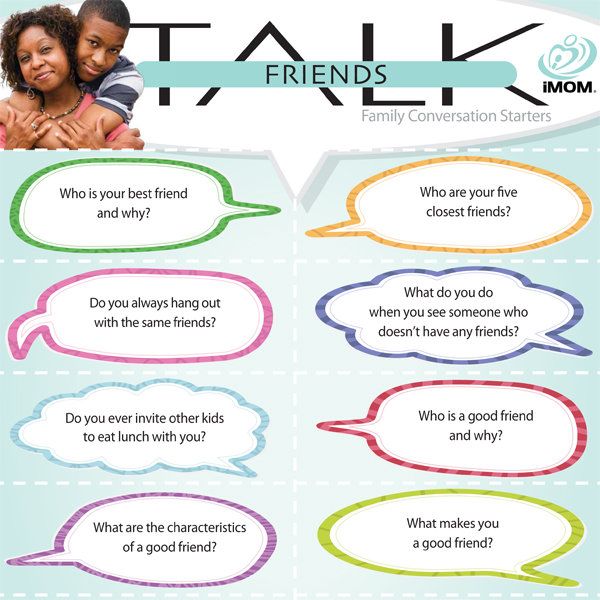
The same is true for your well-being. If everything else in your life is going great, but you feel lonely, or you're eating unhealthfully, other areas of your life will be affected, and you likely won't feel as well as you want to.
Because each part of well-being is important to your overall sense of well-being, let's talk about how to build each type of well-being:
Emotional Well-Being. To develop emotional well-being, we need to build emotional skills — skills like positivity, emotion regulation, and mindfulness, for example. Often, we need to build a variety of these skills to cope with the wide variety of situations we encounter in our lives. When we have built these emotional well-being skills, we can better cope with stress, handle our emotions in the face of challenges, and quickly recover from disappointments. As a result, we can enjoy our lives a bit more, be happier and pursue our goals a bit more effectively.
Here are some of the skills that research suggests contribute to emotional well-being:
- Happiness Skills
- Mindfulness Skills
- Positive Thinking Skills
- Resilience Skills
Physical Well-Being.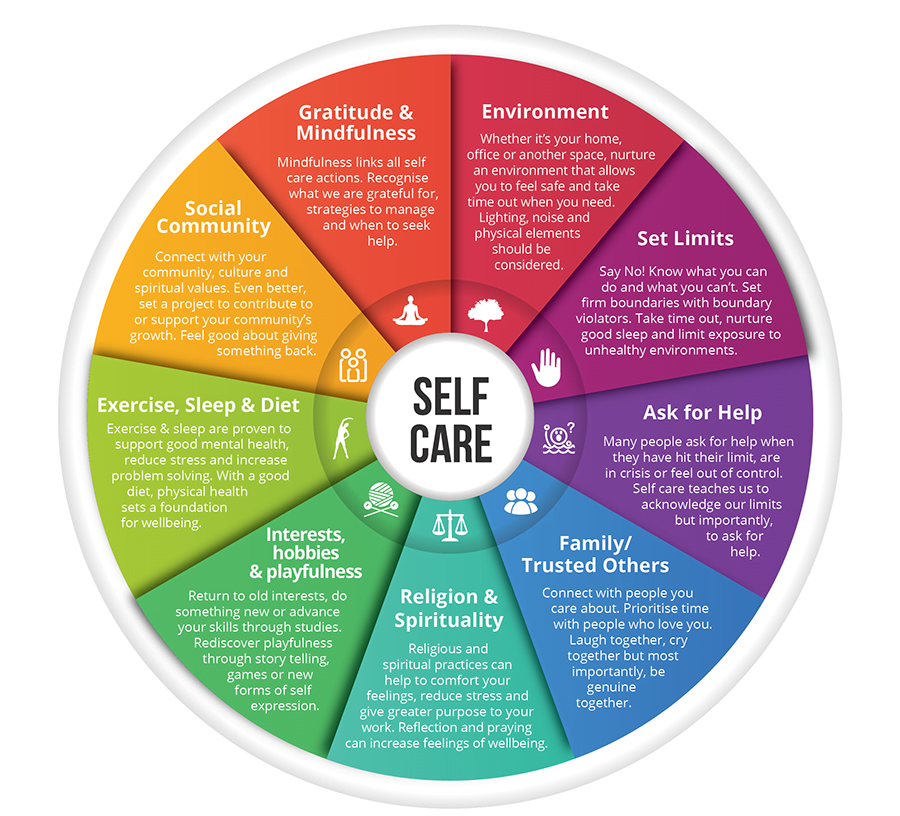 To develop our physical well-being, we need to know what a healthy diet and exercise routine looks like so that we can implement effective strategies in our daily lives. When we improve our physical well-being, not only do we feel better, but our newfound health can also help prevent many diseases, heal our guts, boost our emotional well-being, and limit the number of health challenges we have to deal with in our lives.
To develop our physical well-being, we need to know what a healthy diet and exercise routine looks like so that we can implement effective strategies in our daily lives. When we improve our physical well-being, not only do we feel better, but our newfound health can also help prevent many diseases, heal our guts, boost our emotional well-being, and limit the number of health challenges we have to deal with in our lives.
Here are some of the things that can help you boost your physical well-being:
- Eating for Health
- Detoxing Your Body
- Correcting Nutritional Deficiencies
- Removing Plastic From Your Home
Unfortunately, it's possible to eat healthily but still be unhealthy. We can accidentally miss important foods or nutrients. Or we can overburden ourselves with toxins from plastic or processed food. As a result, we may need to eat additional foods, detox our bodies, or prevent these toxins from entering our bodies again. This is why it's essential to learn about health so that we can make the right changes — those that lead to long-term health and well-being.
Social Well-Being. To develop social well-being, we need to build our social skills, like gratitude, kindness, and communication. Social skills make it easier for us to have positive interactions with others, helping us to feel less lonely, angry, or disconnected. When we have developed our social well-being, we feel more meaningfully connected to others.
Here are some of the skills that research suggests contribute to better social well-being:
- Practicing Gratitude (for example with a gratitude journal)
- Building Meaningful Social Connections
- Managing Your Relationship with Technology
It's important to know that building social well-being is one of the best ways to build emotional well-being. When we feel socially connected, we also tend to just feel better, have more positive emotions, and are able to cope better with challenges. This is why it's essential to build our social well-being.
Workplace Well-Being. To develop our workplace well-being, we need to build skills that help us pursue what really matters to us. This can include building professional skills which help us to meet our life goals and help us manifest things, but it also includes things like living our values and maintaining work-life balance. These skills let us enjoy our work more, helping us to stay focused, motivated, and successful at work. When we have developed workplace well-being, our work, and therefore each day, feels more meaningful.
To develop our workplace well-being, we need to build skills that help us pursue what really matters to us. This can include building professional skills which help us to meet our life goals and help us manifest things, but it also includes things like living our values and maintaining work-life balance. These skills let us enjoy our work more, helping us to stay focused, motivated, and successful at work. When we have developed workplace well-being, our work, and therefore each day, feels more meaningful.
Here are some of the key skills you need for workplace well-being:
- Maintaining Work-Life Balance
- Finding Your Purpose
Because we spend so much time at work, building our workplace well-being has a big impact on our overall well-being.
Societal Well-Being. To develop societal well-being, we need to build skills that make us feel interconnected with all things. We need to know how to support our environment, build stronger local communities, and foster a culture of compassion, fairness, and kindness. These skills help us feel like we're part of a thriving community that really supports one another and the world at large. When we cultivate societal well-being, we feel like we are a part of something bigger than just ourselves and live happily.
These skills help us feel like we're part of a thriving community that really supports one another and the world at large. When we cultivate societal well-being, we feel like we are a part of something bigger than just ourselves and live happily.
Although each of us only makes up a tiny fraction of a society, it takes all of us to create societal well-being. If each of us did one kind act for someone else in our community, then we would live in a very kind community. Or if all of us decide we are going to recycle, then suddenly we create a world with significantly less waste. In order to live in a healthy society, we too need to contribute to making a healthy society.
Here are some of the skills you can build for greater societal well-being:
- Living Your Values
- Creating a Plastic-Free Home
- Making Positive Impacts on Other People's Lives
- Kindness
Who Benefits Most From Building Well-Being?
Not everyone experiences the same benefits from building their well-being.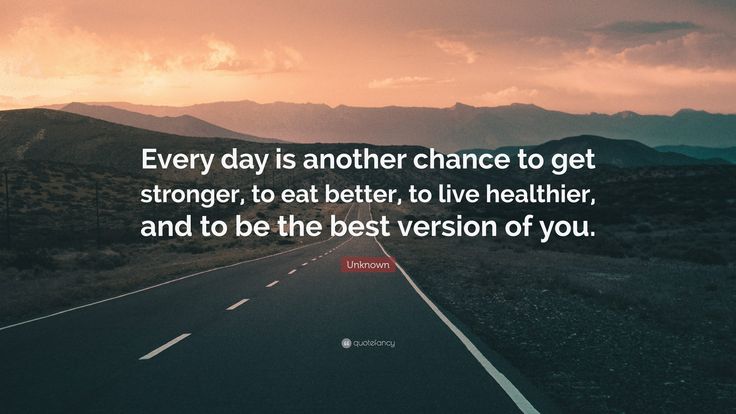 For example, lots of research suggests that the more motivated you are to build well-being skills, the greater the impact. Perhaps this is not surprising.
For example, lots of research suggests that the more motivated you are to build well-being skills, the greater the impact. Perhaps this is not surprising.
Still other research shows that having skills like a growth mindset or a positive attitude can actually help you build your other well-being skills more easily. This is why I tend to encourage people to build these skills first — afterward, you may be able to increase the other types of well-being more easily.
In addition, building well-being skills is perhaps most beneficial for people struggling the most, particularly if they've recently undergone something stressful. It may be harder to build well-being during this time, but the impact may be greater because there is more room for improvement.
There Is No Magic About Building Well-Being
Keep in mind that it takes time and effort to build any new skill set — that includes well-being skills. It's important to be realistic with yourself about what you can reasonably accomplish in a given amount of time. Having unrealistic expectations can lead you to give up before you've reached your well-being goals. So it's key to create a realistic plan for your well-being, stick to it, and take small actions every day that add up to big improvements over time.
Having unrealistic expectations can lead you to give up before you've reached your well-being goals. So it's key to create a realistic plan for your well-being, stick to it, and take small actions every day that add up to big improvements over time.
If you've read my earlier posts, you might know that I too have struggled with aspects of my well-being, particularly with maintaining work-life balance. The truth is, we all struggle, and new struggles can and will pop up, even if you're doing well. But the longer we've worked on strengthening our well-being skills, the easier it is to be resilient, take the actions needed to bounce back, and continue moving forward.
Growing your well-being is a lifelong pursuit, but it is totally worth it.
John Rockefeller quote: Your well-being depends on your own decisions.
— John Rockefeller
Source: http://shkolazhizni.ru/archive/0/n-3108/ On what decisions does well-being depend?
Taken from Wikiquote. Last updated August 18, 2022
Topics
solution, own, welfare
John Rockefeller
32 American entrepreneur, philanthropist, first dollar … 1839 - 1937Similar quotes
“Wealthy people see the goal and take responsibility for achieving it themselves, personally invest in this work, creatively approach emerging problems and do not blame anyone if something goes wrong. The main thing is to understand that your well-being and well-being depend on your own decisions.”
The main thing is to understand that your well-being and well-being depend on your own decisions.”
— Dmitry Vasilievich Breitenbikher 1975
“Always rely on the idea that your own decision to succeed is much more important than anything else.”
- Abraham Lincoln 16th President of the United States 1809 - 1865
"It is frivolous and harmful to assume one's own prejudices and prejudices, on which important decisions depend, and to neglect them."
- Zafar Mirzo 1972
spiritual strength and your own precious time to prove your own innocence in front of people who are often not important to you. Your personal opinion is yours alone; your personal truth is only yours; the decision of what and how to do with your own life is entirely up to you. You are right, period.”
- Oleg Roy 1965
"The well-being of a person of the future depends on his wisdom to be friends with a modern selfish person."
- Zafar Mirzo 1972
or other side. "
"
- Jack Ma 1964
"Only a few, whose vile well-being depends on people's grief, make war."0003
“The prosperity of the state, the well-being of the people depend invariably on the goodness of morals, and the goodness of morals - invariably on education.”
— Nikolai Ivanovich Novikov Russian journalist, publisher and public figure 1744 - 1818
“Everyone has a desire for general well-being. But, it should be realized that it is on the will of each to purposeful activity that his achievement depends.”
— Zafar Mirzo 1972
“Personally, I am ready to risk my own well-being for the sake of entertainment, by the way, yours too.”
- George Carlin American comedian 1937 - 2008
"It is indisputable that all human morality depends on deciding whether the soul is immortal or not."
- Blaise Pascal French mathematician, physicist, writer and philosopher - does not depend on us. Getting hurt is not up to us. And to lose honor. .. When you behave incorrectly, make wrong decisions, then you will lose honor and conscience.”
.. When you behave incorrectly, make wrong decisions, then you will lose honor and conscience.”
— Ramzan Akhmatovich Kadyrov Russian statesman and political figure, head of the Chechen Republic 1976
“There is only one way to find a solution to your problems in advertising - ask your buyer. This is the ultimate truth.”
— Claude Hopkins
“Make your own Bible. Select and collect all the words and sentences that in all your readings have been like blowing a trumpet to you. "
- Ralph Waldo Emerson American essayist, poet, philosopher, pastor, public figure 1803 - 1882
"Love is when you want all the best to the people you love when you put their interests and well-being above your own, always.”
- Angelina Jolie American actress, director and screenwriter, fashion model, UN Goodwill Ambassador 1975
Federation 1952
On the possibility of nominating his candidacy for the fourth presidential term.
Sayings, 2015
Source: Esquire.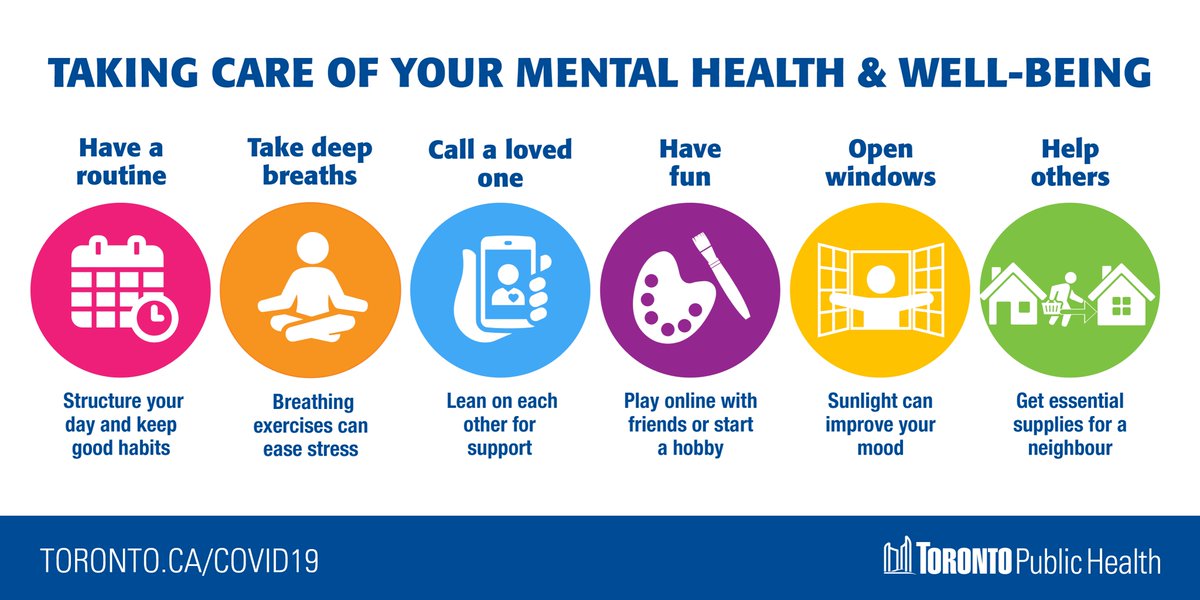 Quote of the Day. 09/29/2015. https://esquire.ru/quotes/29092015
Quote of the Day. 09/29/2015. https://esquire.ru/quotes/29092015
“Because Fed officials are civil servants on whose decisions the life of every citizen depends, in a democratic society they are obliged to give the people and their elected representatives a full and convincing explanation of their decisions.”
— Ben Shalom Bernanke 1953
the main reason for the growth of openness and accountability of the Fed
“Our position on Earth is truly amazing. Everyone appears on it for a short moment, without a clear goal, although some manage to come up with a goal. But from the point of view of everyday life, one thing is clear: we live for other people - and most of all for those on whose smiles and well-being our own happiness depends.“
— Albert Einstein theoretical physicist, one of the founders of modern theoretical physics, Nobel laureate, public figure… 6
“The power of the priest depends on the superstition and stupid credulity of nations. He doesn't need them to be enlightened at all. The less they know, the more obedient they are to his decisions.”
He doesn't need them to be enlightened at all. The less they know, the more obedient they are to his decisions.”
— Claude Adrian Helvetius French writer and materialist philosopher 1715 - 1771
“It is partly more important to know how humanity reflected on this problem than to have its own solution to it.“
- Ernest Renan French writer, historian and philologist 1823 - 1892
Related topics
- Solution 9015
- Blessedness
Right for your well-being | Internet Questions
Youth Advice
Find out more about tools that make it easier to navigate the Internet and improve your digital well-being. nine0003
Find out more
Read more in the Basics section
You are in: Do the basics
Do it just for your well-being
What you will learn
Settings Get the most out of your phone or tablet:
If you have trouble seeing
These tools can help: device. These tools can help: These tools can help: These tools can help: 
If you have difficulty hearing
If you are dyslexic or bad at reading
 It will even correct your spelling for you!
It will even correct your spelling for you!
Manage your time on your phone

Learn more
 43,44
43,44

